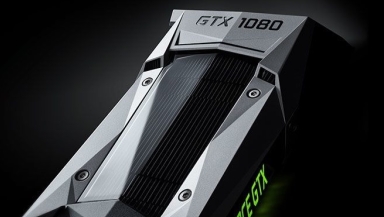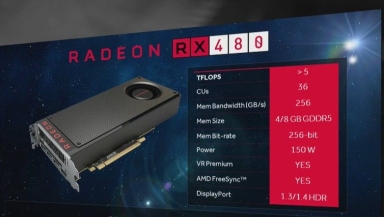
First it was the NVIDIA GeForce GTX 1080 that was released, and now it is the AMD Radeon RX 480. The big question now for PC gamers or VR enthusiasts is: Which one to choose? Here is a basic comparison between the two top-of-the-line GPUs that have been announced.
NVIDIA's Pascal GTX 1080 contains 2560 CUDA Cores with a base clock of 1,607MHz and a boosted clock of 1,733 MHz. It contains 8GB of GDDRX 5, which is standard, with a 10 Gbps memory speed, 256-bit memory interface and a 320 GBps bandwidth speed. It uses the 16nm FinFET manufacturing process.
It supports multi-projection, NVIDIA Ansel, SLI HB Bridge, G-sync, NVIDIA GPU Boost 3.0 and NVIDIA GameStream. It is also ready for VR, Microsoft DirectX 12, Vulkan API, and OpenGL 4.5. It will work with any PCIe 3.0 bus, and with different operating systems such as Windows 7, Windows 8, Windows 8.1, Windows 10, Linux and FreeBSDx86.
The maximum display resolution is set at 7680 × 4320 @60Hz and it offers connections for Display Port 1.42, HDMI 2.0b, DL-DVI and HDCP 2.2. It can drive multiple displays as well.
TechFrag provided the following Benchmark score and game performance values for the GTX 1080 :
- 3D Firestrike – 22,085 - Normal, 10,556 - Ultra, 5,130 – Extreme
- "GTA V" (Video settings: High with 2xMSAA) - 150 FPS @1080P, 110 FPS @1440P, 58 FPS @4K
- "Crysis 3" (Video settings: Very high with 2xMSAA, 4x AF) - 110 FPS @1080p, 70 FPS @1440p, 33 FPS @4K
- "The Witcher 3" (Video settings: Ultra, High Post Process, Hairworks Off) - 104 FPS @1080p, 76 FPS @1440p, 48 FPS @4K

The AMD Radeon RX 480 is tailored for gamers and VR enthusiasts looking for a powerful GPU but which costs less than the top-tier video cards available today. It contains 2,304 shaders (same as NVIDIA's CUDA cores), a boosted clock speed of 1,266 MHz, a 4GB or 8GB GDDR5 memory module, 256-bit memory interface, and 256 GBps bandwidth speed. The GPU uses a 14nm FinFET manufacturing process that is a step above the GTX 1080.
An HDMI 2.0, HDCP 2.2 (high-end 4K functionality), DisplayPort 1.3, and 1.4 are the available connections for the AMD GPU. Currently, the company has not released the full specification of its RX 480, so there is limited information on it right now.
The GTX 1080 Founders Edition is priced at US$699, while the standard edition is availble for US$599. The AMD RX 480 is between US$199 and US$249, and will be ready by June 29.













